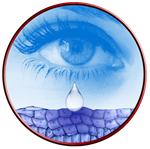 |
SKINETHIC™ HCE TIME-TO-TOXICITY: THE FIRST INDIVIDUAL METHOD FORMALLY VALIDATED BY THE OECD FOR DISCRIMINATING ON ITS OWN THE THREE UN GHS OCULAR HAZARD CATEGORIES
|
CONTEXT
Serious eye damage refers to the production of tissue damage in the eye, or serious physical decay of vision, which is not fully reversible, occurring after exposure of the eye to a test chemical, as defined by the United Nations Globally Harmonized System of Classification and Labelling of Chemicals (UN GHS). Test chemicals inducing serious eye damage are classified as UN GHS Category 1, while those inducing eye irritation are classified as UN GHS Category 2. Test chemicals not classified for eye irritation or serious eye damage are referred to as UN GHS No Category (No Cat).
This SkinEthic™ Human Corneal Epithelium (HCE) Time-to-Toxicity (SkinEthic HCE TTT) describes an in vitro procedure allowing the identification on its own of chemicals (substances and mixtures) not requiring classification (No Cat), labelling for eye irritation (Cat 2) and serious eye damage (Cat 1) in accordance with the three UN GHS ocular hazard categories.
The SkinEthic™ HCE Time-to-Toxicity in vitro test method on Liquids (SkinEthic™ HCE TTL) and on Solids (SkinEthic™ HCE TTS) has been developed and established within L’Oréal by evaluating 151 chemicals (Alépée et al, 2020; Alépée et al., 2021).
On the basis of the data currently available, the SkinEthic™ HCE TTT method was shown to be applicable to a wide range of liquid/viscous/solids chemicals, covering a large variety of chemical types, chemical classes, functional groups, direct MTT reducers. The test method allows the hazard identification of mono and multi-component test liquid/viscous/solids (neat or in dilution) chemicals.
A multicentric study demonstrated the relevance (predictive capacity) and reliability (reproducibility within and between laboratories) of the test method by testing 40 coded chemicals within three naïve laboratories .
From the method development / validation study and its independent peer review (Barroso el al, 2021) it was concluded that the SkinEthic™ HCE TTT is able to correctly identify chemicals (both substances and mixtures) by discriminating the three UN GHS categories. Note that this test method is not intended to differentiate between UN GHS Category 2A (reversible effect on day 14) and Category 2B (reversible effect on day 7).
The SkinEthic™ HCE Time-to-Toxicity test method has beend validated by OECD (TG 492B) on June 30, 2022.
MODELS
PROTOCOL PRINCIPLE
SkinEthicTM HCE model allows the identification on its own of the 3 UN GHS ocular hazard categories.
DETAILED ASSAY PROCEDURE
This test method is applicable to substances and mixtures, to solids, liquids, semi-solids and waxes. The liquids may be aqueous or non-aqueous, fully water miscible or not fully water miscible; solids may be soluble or insoluble in water.
Do not hesitate to get information on our training sessions or to contact our technical support.
REFERENCES
Performance of the DASF Compared to Other Combinations of OECD NAMs for Eye Hazard Identification of Surfactants.
Nathalie Alépée, Karsten R. Mewes, Takayuki Abo, Alessandra Cavarzan, Chelsea A. O’Driscoll and Els Adriaens. ALTEX 42(1), 75-90 (2025).
Request a copy of this paper, click here
Development of a Defined Approach for Eye Hazard Identification of Solid Chemicals According to the Three UN GHS Categories.
N. Alepee and Els Adriaens. ALTEX 41(3), 457-468 (2024).
Request a copy of this paper, click here
Development of a Defined Approach for Eye hazard identification of chemicals having surfactant properties according to the three UN GHS categories.
N. Alepee, E. Adriaens, T. Abo, J. Magby, K.R. Mewes, A. Giusti. Toxicology in Vitro 89 (2023) 105576 (2023).
Request a copy of this paper, click here
Validation of the SkinEthic HCE Time-to-Toxicity test method for eye hazard classification of chemicals according to UN GHS. Alépée, N., Grandidier, MH., Teluob, S., Amaral, F., Caviola, E., De Servi, B., Martin, S., Meloni, M., Nardelli, L., Pasdelou, C., Tagliati, V., Viricel, A., Adriaens, E., Michaut, V. (2022). Validation of the SkinEthic HCE Time-to-Toxicity test method for eye hazard classification of chemicals according to UN GHS. Toxicol. in Vitro 80, 105319 (2022)
Request a copy of this paper, click here
Development of the SkinEthic HCE Time-to-Toxicity test method for identifying liquid chemicals not requiring classification and labelling and liquids inducing serious eye damage and eye irritation. Alépée, N., Leblanc, V., Grandidier, MH., Teluob, S., Tagliati, V., Adriaens, E., Michaut, V., Toxicol. in Vitro 69, 104960, (2020)
Request a copy of this paper, click here
SkinEthic HCE Time-to-Toxicity on Solids: A test method for distinguishing chemicals inducing serious eye damage, eye irritation and not requiring classification and labelling. Alépée, N., Leblanc, V., Grandidier, MH., Teluob, S., Viricel, A., Adriaens, E., Michaut, V., Toxicol. in Vitro 75, 105203, (2021)
Request a copy of this paper, click here
Posters presented at the 11th World Congress On Alternatives And Animal Use In The Life Sciences, August 2021, Alépée et al.